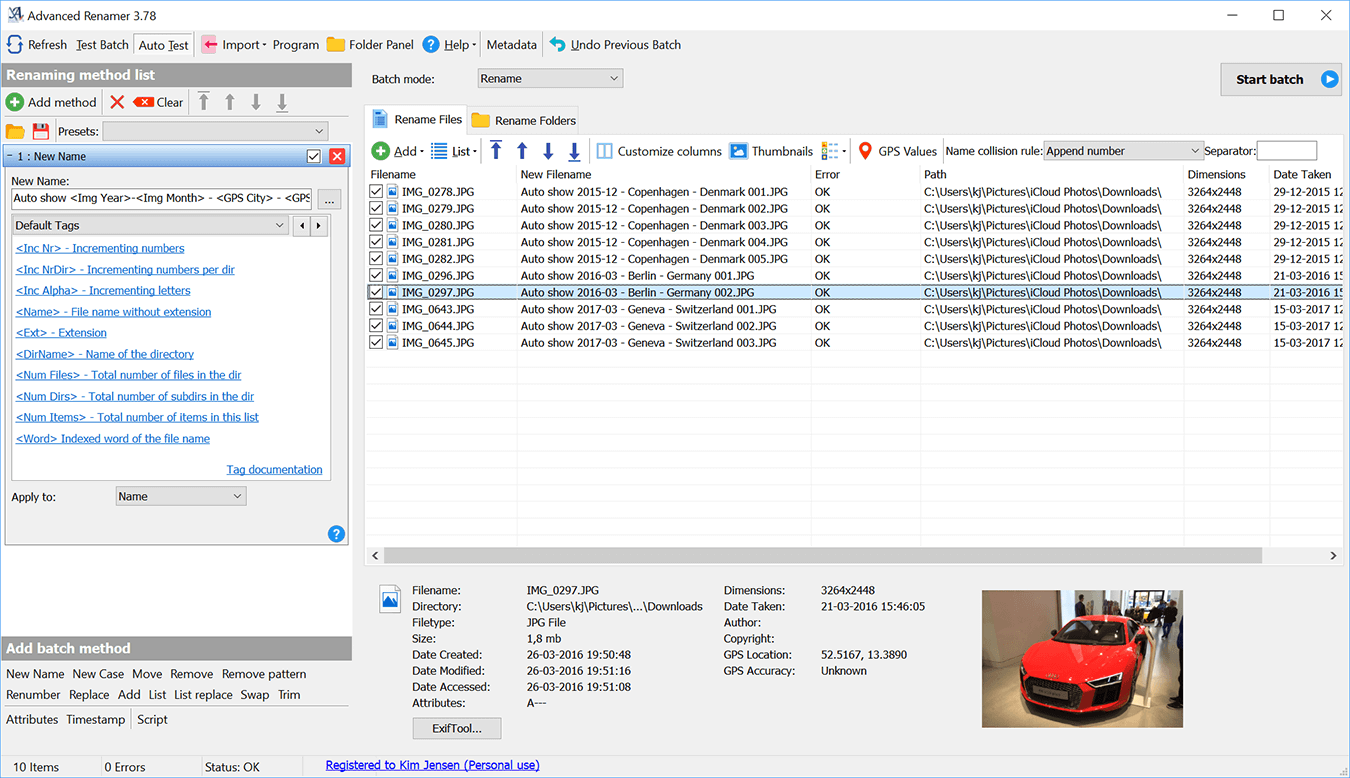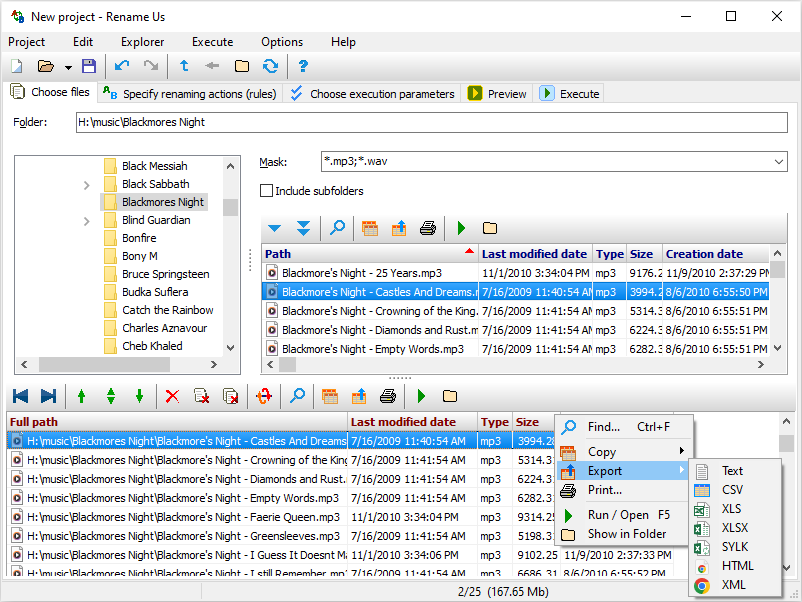

If you point it at something critical, you could break your operating system. It removes entire directories, including file structures and everything in-between. You can add parameters to both commands to delete and remove specific types of files or to simply remove everything.įair warning, the rmdir command is powerful and potentially dangerous. The Command Prompt has two powerful file removal commands at its disposal: DEL and rmdir.ĭEL is fairly self-explanatory as the command to delete a file, while rmdir is the command to remove an entire directory. Batch Delete Files Using the Command Prompt
#Batch file rename files in subdirectorys windows#
When it comes to batch deleting files on Windows 10, you have a few options. This command works from the top of the file directory downwards, changing batch renaming matching files in each subfolder. One thing you can do with PowerShell is batch rename files throughout an entire directory, rather than a single folder. Dir | Rename-Item –NewName īatch Rename Filenames Throughout Entire Directory One option is to replace part of the filename with something else, which is handy for replacing files from a digital camera. PowerShell offers a few different options for batch renaming filenames. If your filename includes spaces, you'll need to use quotation marks around the filenames, like so: Rename-Item "file name with spaces.jpg" "new file name with spaces.jpg" If you want to rename a single file, use the following command: Rename-Item filename.jpg newfilename.jpg How about adding a suffix to a group of files? You can do that using the following command:įrom here, you can begin batch renaming filenames with PowerShell. Here, the question mark wildcard acts as any character, allowing the command to find any matching files while outputting the renamed files. For example, if you want to change the number of digits in your file names, you can use the following command: ren document?.txt document3?.txt

If you want to rename multiple files, you can use the wildcard characters to make changes. The command to rename a single file is: ren filename.jpg newfilename.jpg Type dir and press Enter to see the list of files. Head to the folder containing the files you wish to rename, hit Shift + Right Click, and select Open a command window here. The command allows for the wildcard characters "*" and "?" as well as changing file extensions, though it doesn't permit you to move files into different folders after renaming. You can use the ren command to rename multiple files simultaneously. csv OFFįOR /F "tokens=1 delims=.The Windows Command Prompt offers a bit more flexibility for batch file renaming. logĮDIT (as per request in first comment) ::copyfiles.bat

IF NOT "%%j"="!_filename!" SET _dirname=%%jĮCHO "%%i" =^> "%_destination%\!_dirname!_!_filename!"ĬOPY "%%i" "%_destination%\!_dirname!_!_filename!"Īt the moment nothing has been hardcoded: to use it, do this.

Batch does not play nice with the string manipulation necessary to extract the directory name. You might want to consider using something more flexible than a batch file a simple C++ program would have been much easier.


 0 kommentar(er)
0 kommentar(er)
